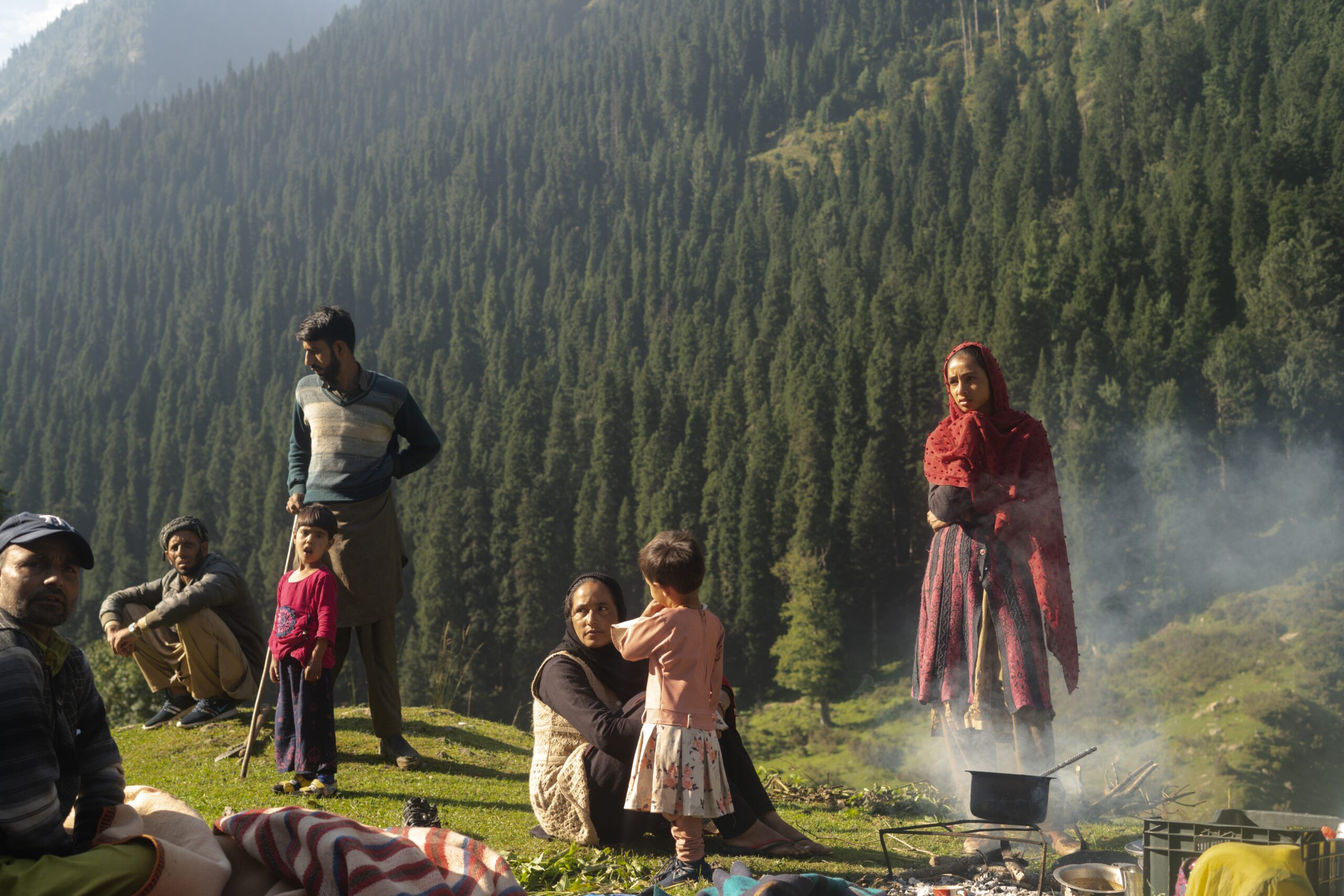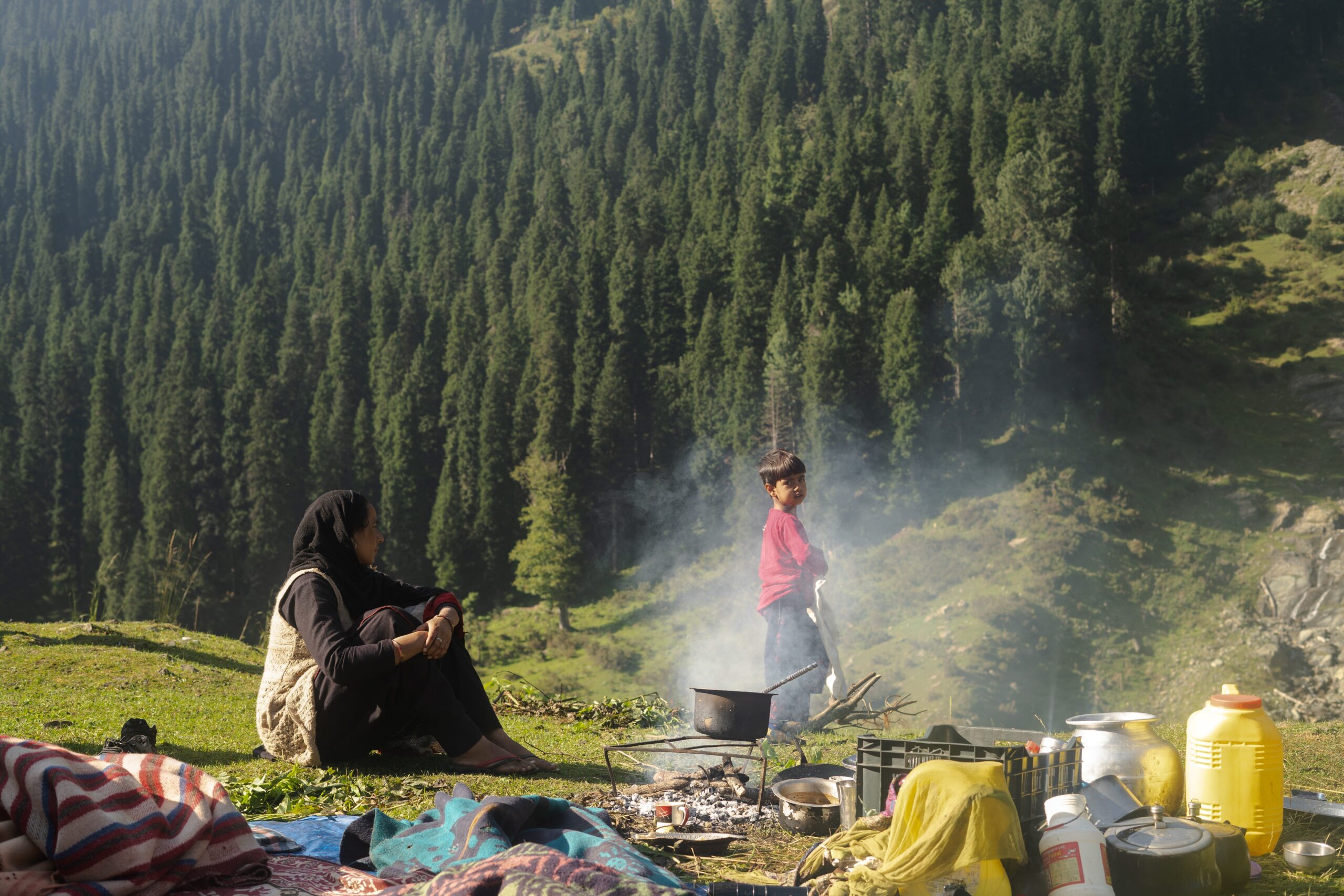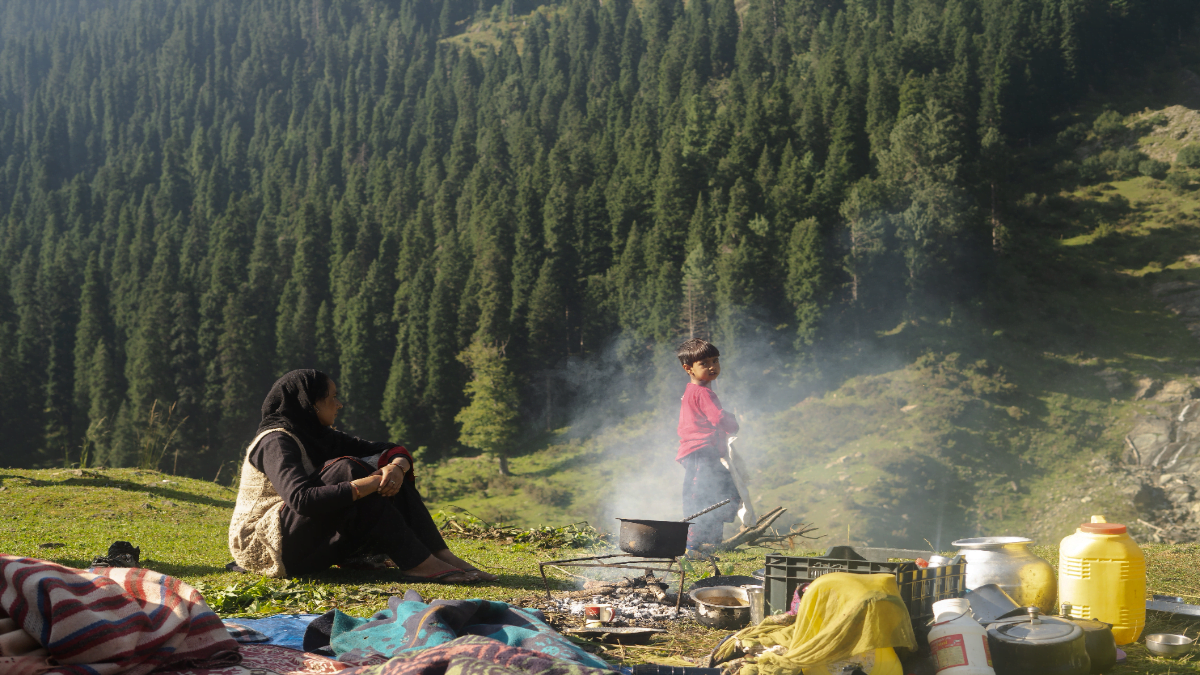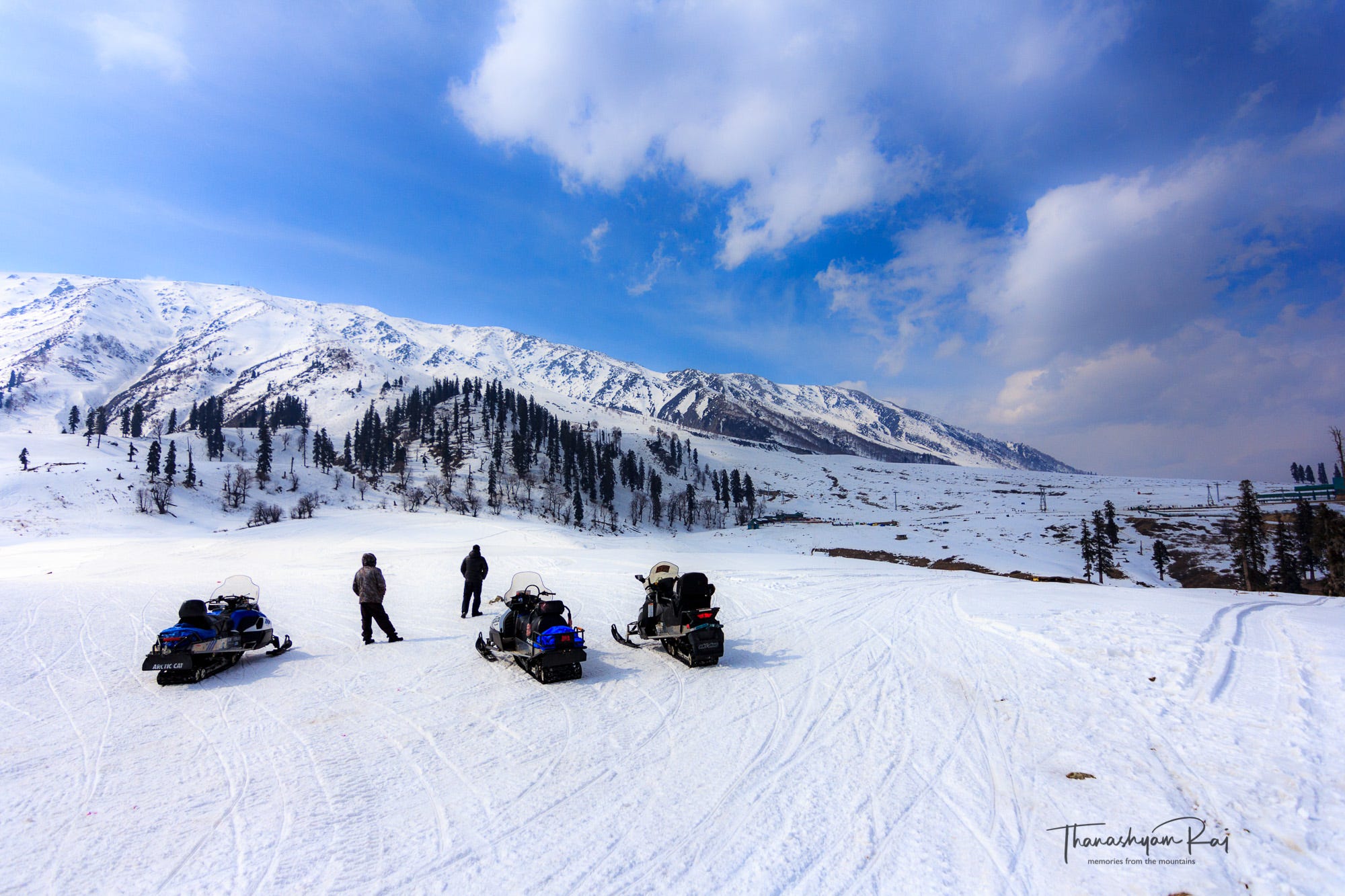In the remote Himalayan village of Pahalgam, Zubaida Begum, a resilient 45-year-old mother of three, faces a daily battle against climate change and nature’s capricious wrath. Living in a mountainous place where the elements can be unforgiving, she stands as a beacon of courage, safeguarding her family’s survival in the rugged terrain.
Her days begin at 5 a.m., with the responsibility of preparing breakfast for her extended family of 12. Despite the societal expectations that are meant to confine her to traditional gender roles, Zubaida Begum defies these norms by actively participating in the physically demanding tasks of tending to her family’s flock of sheep alongside male family members. She skilfully navigates the treacherous terrain, ensuring the well-being of both her family and their livelihood.
But Begum’s chores have become harder and harder with the increasing frequency and intensity of extreme weather events.
But Begum’s chores have become harder and harder with the increasing frequency and intensity of extreme weather events. Each day, she must navigate the elements, constantly adapting and finding innovative ways to protect her loved ones from nature’s brutality.
‘What was once a routine has now become a battle for survival,’ Begum said.
The relentless onslaught of snow and rain on the Himalayan mountains has compounded the daily struggles of those who call these slopes home, turning what was once a sanctuary into a harsh terrain. For tribal women, and particularly for expectant mothers like Begum’s daughter-in-law, the consequences of these extreme weather patterns can be dire. Access to proper health care requires a perilous miles-long journey downhill. In this hostile landscape, the revered mountains become formidable obstacles that stand between these women and the care they urgently need.
A new assessment is needed
Flash floods triggered by untimely rains has cast a shadow over Begum’s and her family’s lives, which are precariously lived to begin with.
‘These deluges have the power to wash away our temporary tents, leaving us exposed to the elements without shelter, food, or clothing, and, nights under the open sky, once a peaceful tradition, have now become an unsettling norm,’ said Begum, her voice carrying the weight of years of hardship. The mountains, once stalwart protectors, now metamorphose into capricious adversaries, and they find themselves at their mercy. The vulnerability etched in each word epitomises the precarious dance they perform with nature, where the familiar landscapes that cradled their existence now pose a constant threat, forever altering the rhythm of their lives.
Climate change directly impacts the nomadic Gujjar-Bakarwal community, whose livelihood revolves around raising livestock in mountainous regions. The changing climate disrupts their traditional way of life, posing significant challenges to their ability to sustain and navigate the fragile ecosystems upon which their survival depends.
The changing climate disrupts their traditional way of life, posing significant challenges to their ability to sustain and navigate the fragile ecosystems upon which their survival depends.
‘The increase of extremes weather events in mountainous areas, such as flash floods, cloudbursts (a sudden, heavy rainfall), avalanches, landslides, and other hydro-meteorological disasters, negatively impacts the nomads’ way of life,’ said Shakil Ramshoo, an expert in earth sciences at the Islamic University of Science and Technology in Jammu and Kashmir.
Ramshoo makes clear that the first step toward reinforcing the security of the people who live on the mountains requires that initial assessments be done before changes can be made.
‘In order to initiate robust climate change adaptation measures and lessen the negative effects of climate change on the community, it is necessary to assess the susceptibility of marginalised groups in society to climate change, such as nomads.’ said Ramshoo.
One woman’s tragedy in the mountains
In May of last year, tragedy struck Begum’s family. Begum’s voice trembles as she recalls what happened: ‘Our world came crashing down that day.’
In May of last year, tragedy struck Begum’s family. Begum’s voice trembles as she recalls what happened: ‘Our world came crashing down that day.’
Her pregnant daughter-in-law had begun experiencing labour pains on the mountain. It would require a dangerous downward journey to reach the hospital. Heavy rains cut off the family’s escape, and ‘desperation pushed us further into the heart of nature’s fury,’ Begum said.
That’s when the unthinkable happened. ‘My daughter-in-law slipped from the steep mountain slope, and we lost our unborn child in an instant,’ Begum said. ‘When the rain finally stopped, it was too late. Four agonising hours later, we arrived at the hospital, only to receive the unbearable news that the infant had succumbed to the wounds sustained during that fall.’ Her daughter-in-law survived.

‘The mountain took something precious from us that day,’ Begum said, ‘something that can never be replaced.’
Unexpected risks are on the rise due to climate change
Another, perhaps unexpected, result of climate change in the Himalayas is that tribal women have become at greater risk of attacks from wild animals. Data from the region’s wildlife department shows that from the beginning of 2010 to the end of March 2020, wild animals, such as bears and leopards, killed 166 people and injured 2,659 in Kashmir. Climate change and water scarcity are the main causes of the increase in mortality, according to experts.
‘I often find myself grappling with the harsh realities of climate change as it takes a toll on our community. In our pursuit of survival, we face the daunting challenges posed by the consequences of this global crisis. Water scarcity and food shortages have become relentless adversaries, pushing wild animals into our territory, seeking sustenance just like us. In the quest for survival, these creatures, driven by desperation, not only claim our livestock but also pose a direct threat to our lives’ said Begum.
She recalled the haunting incident from last year when a bear brazenly invaded their tent, leaving a trail of fear and injuries among her family members.
She recalled the haunting incident from last year when a bear brazenly invaded their tent, leaving a trail of fear and injuries among her family members. ‘The boundary between the wild and our living spaces is diminishing, blurred by the encroaching impacts of climate change. As we endeavor to eke out a living, we find ourselves entangled in a precarious dance with nature, where the line between predator and prey becomes increasingly unclear. The struggle for resources transcends the realms of the animal kingdom, permeating into our daily lives, intertwining our fates with the untamed forces of the natural world’ she adds.

Beyond the precarious physical challenges that define life in the Himalayas, the increasingly erratic weather patterns exact a toll on the mental well-being of women like Begum. The specter of unpredictable and extreme weather casts a constant shadow, infusing their lives with perpetual fear and anxiety. The devastating consequences of these climatic shifts ripple through their existence, carving deep imprints on their mental health. Begum, alongside her fellow women, articulates the silent struggles borne by those living amidst the Himalayan peaks. Heightened anxiety, the weight of depression, and the haunting specter of post-traumatic stress disorder become unwelcome companions, woven into the fabric of their daily lives. As stewards of their families and communities, these resilient women grapple not only with the tangible threats of nature but also with the invisible scars etched upon their minds by the relentless dance of an unpredictable climate Begum and other women said.
For Begum, the emotional trauma of losing a grandchild in such a tragic accident intensifies the burdens already shouldered by women like her. Grief and profound loss now accompany her daily struggles, amplifying the challenges she faces. In navigating this new reality, where hardships loom, Begum grapples with the sorrow that has woven itself into the fabric of her existence. The tragic incident not only deepens the emotional scars but also underscores the resilience required to endure the inevitable difficulties that lie ahead, casting a shadow over the uncertain path she must now traverse.







